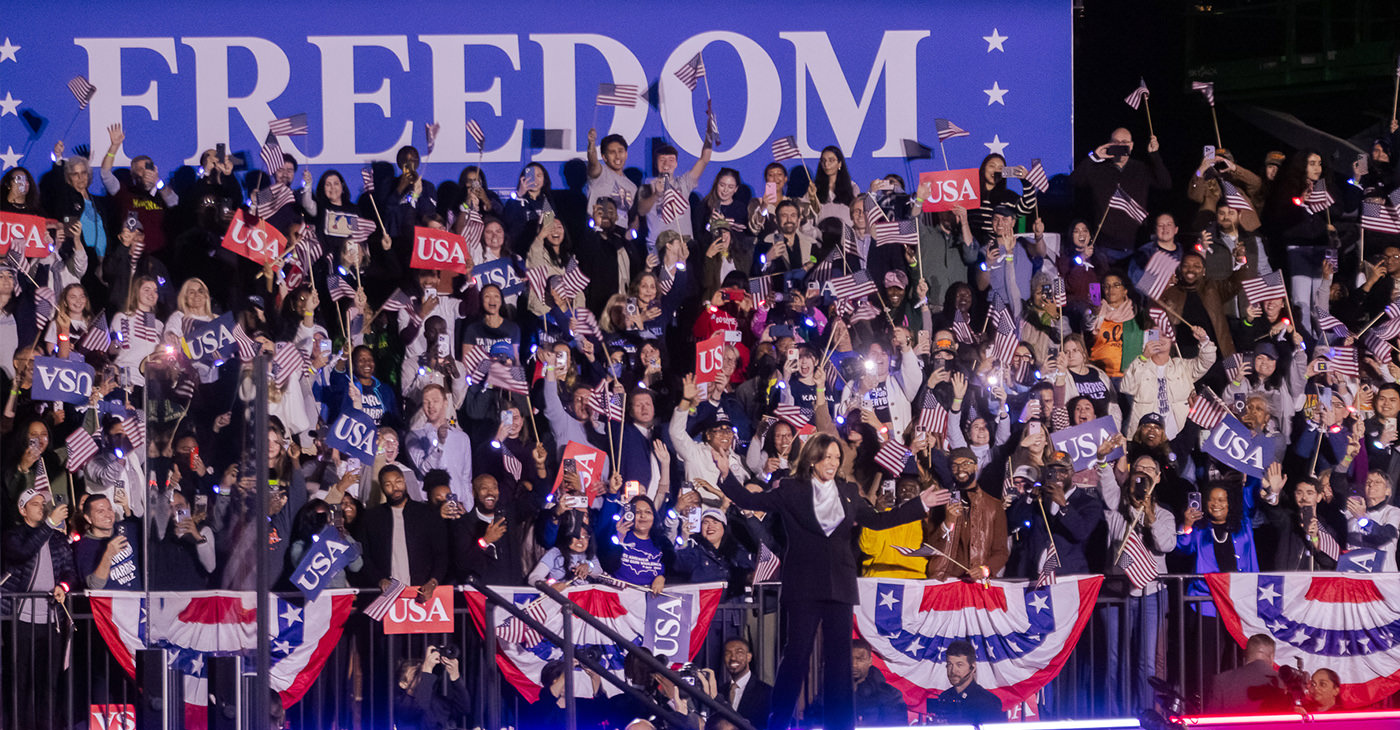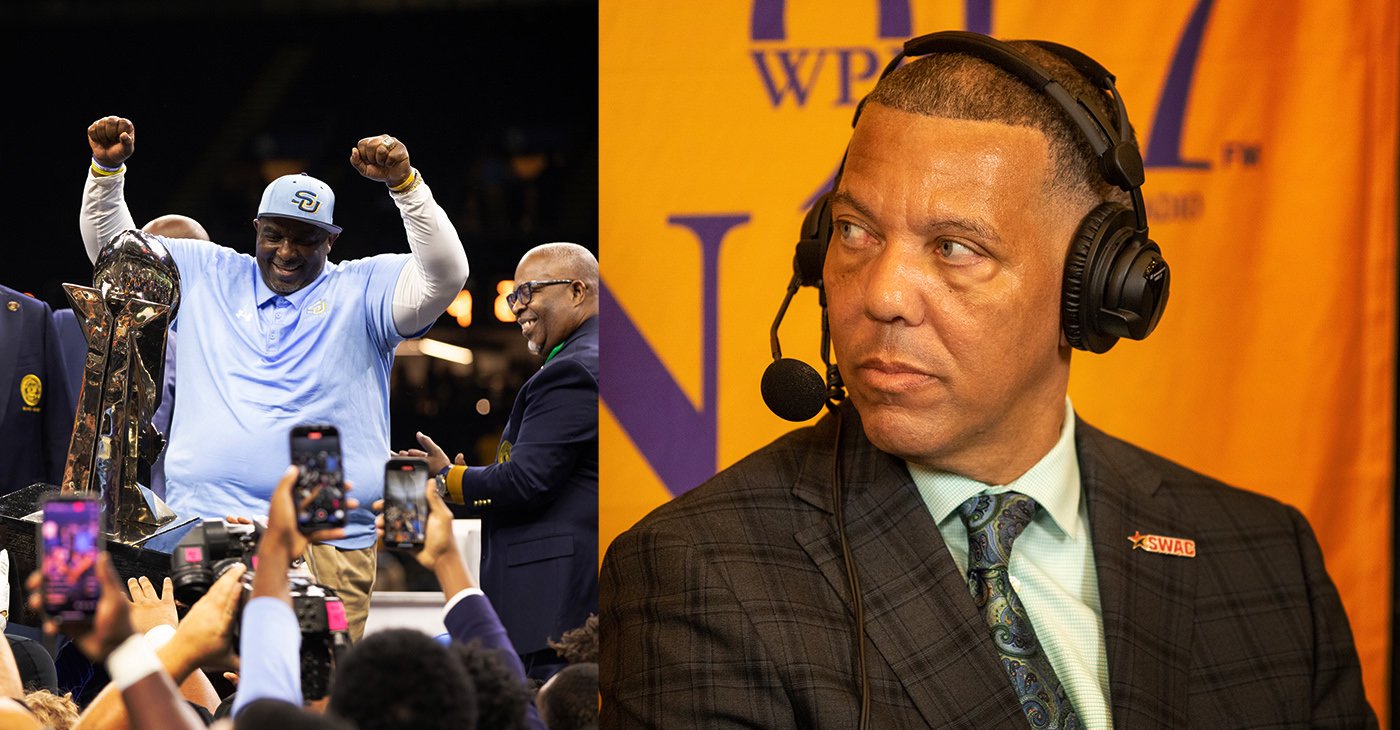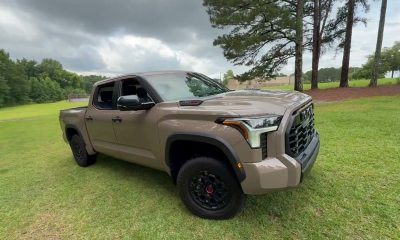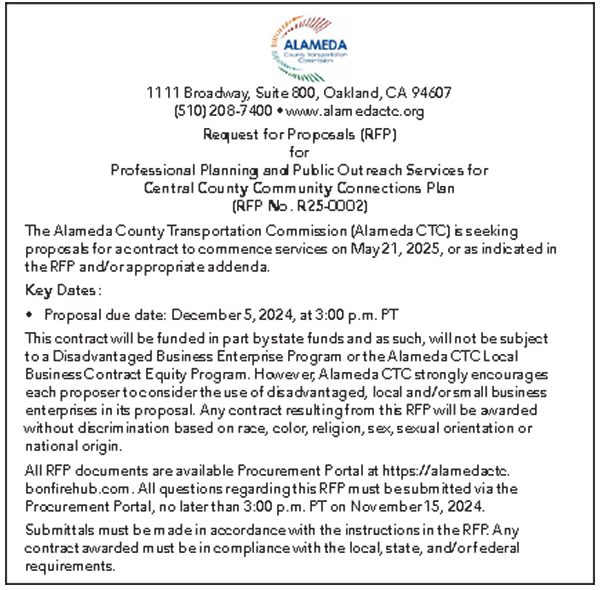#NNPA BlackPress
A Historic Closing Argument
Evoking images of marches and a vision of unity, she said, “I grew up as a child of the civil rights movement.” She said, “My parents took me to those marches, pushing me in a stroller through crowds of people of all races, faiths, and walks of life, all fighting for the ideals of freedom and opportunity. I’ve lived the promise of America.”

By Stacy Brown, Sr. and Greer Marshall
With just one week until the pulse of the nation beats at the ballot box and over 51 million votes already cast, Kamala Harris stood before an audience Tuesday night that outgrew its bounds. What was once imagined as an intimate gathering of 8,000 souls evolved into an ocean of hope, a swelling tide of support that illuminated the final stretch of her journey, with over 75,000 people gathering at the Ellipse in our nation’s capital.
At 7:37 pm, under a sky heavy with purpose, Harris stepped onto the stage, embraced by a wave of thunderous love—a scene lit in flashing reds and blues, where applause rolled like a breaking tide. Her spirit was ablaze as she lifted her voice: “Good evening, America!” Each word rose above the chants of her name, pulsing through the crowd, “Kamala, Kamala.” Her gaze remained steady and with reverence for each life present as she continued to speak. “Thank you for taking the time out of your busy lives.” When she paused, it was clear that she was feeling the weight of the moment. With clear conviction, she said, ”One week from today, you will have a chance to make a decision that directly affects your lives, the lives of your family, and the future of this country. It will probably be the most important vote you’ve ever cast,” she said. Beyond selecting between two parties and two candidates, she said, “It’s about more than just making a choice—of whether you have a country of freedom or one ruled by division.”
Emphasizing her focus on “common ground and common-sense solutions,” Harris promised to hold space for all, regardless of creed or corner of the country. “I am not here to play politics; I am here to make progress,” she proclaimed, as “Freedom” and “USA” banners waved above the crowd like living symbols. “Unlike Donald Trump, I don’t believe people who disagree with me are the enemy. He wants to put them in jail. We have to stop pointing fingers and start locking arms. It’s time to turn the page on the drama, conflict, fear, and division,” Harris advises.
The atmosphere was pulsating, like a never-ending fiesta for the soul. To secure her spot, Fatimah Glasnow came five hours early from Southeast D.C. and said she was deeply moved. “The feeling here is hope, love, and peace,” Glasnow said. “An America where we can all thrive, regardless of our race or gender. I needed this kind of energy in my life.”
Glasnow felt seen and empowered, and her faith was renewed by Harris’ words, especially on issues of social and maternal justice. “She’s advocated for social justice and, really, justice itself.”
For Harris, this gathering was more than a rally; it was a moment to lay bare the heart of her mission, a testament to what fuels her as a leader. There’s something about people being treated unfairly or overlooked that, frankly, just gets to me,” she shared. “I don’t like it. It’s what my mother instilled in me—a drive to hold accountable those who use their wealth or power to take advantage of others.”
When addressing the fall of Roe v. Wade, her resolve was clear. She promised America, “I will fight to restore what Donald Trump and his hand-selected Supreme Court justices took away from the women of America.” With this pledge, Harris reaffirmed her steadfast commitment to preserving and expanding civil rights.
Capitol Hill resident Leander Davis, a social services worker, said Harris’ words resonated deeply. “She’s all of us,” Davis said. “She’s been criticized, ostracized, demonized, and called all sorts of names, yet she hasn’t stopped fighting for what’s right. When she’s president, we will all be better off.”
Harris’ campaign is woven from a life spent challenging injustice and protecting those vulnerable. This was personal. As her words echoed, the crowd’s response was nothing less than electric. Harris made it clear: Her campaign was a call to action. Vowing, “If you give me the chance to fight on your behalf, there is nothing in the world that will stand in my way.”
A striking contrast to the divisive language that has marked Trump’s racist rhetoric, Harris did not shy away from the comparison. “If elected, Donald Trump would walk into that office,” Harris said, gesturing toward the White House, “with an enemies list. When elected, I will walk in with a to-do list.” Her words painted a vision of governance rooted not in vengeance but in purpose. Her administration, she pledged, would focus on practical solutions: lowering costs, supporting working families, and rekindling a sense of unity and shared ambition across the nation.
Though her years as Vice President under President Joe Biden had been an honor, Harris acknowledged the urgency of a new direction. “I have been honored to serve as Joe Biden’s vice president,” she said. “But I will bring my own experiences and ideas to the Oval Office. My presidency will be different because the challenges we face are different.” Her voice conveyed both respect and determination—a promise to carry forward Biden’s legacy but forge a new path to meet America’s evolving needs.
The vice president confronted the charged topic of immigration, calling for accountability and cooperation. “Politicians have got to stop treating immigration as an issue to scare up votes in an election—and instead treat it as the serious challenge that it is,” she said, “that we must finally come together to solve.” She also insisted that “I will work with Democrats and Republicans to sign into law the border security bill that Donald Trump killed.”
Harris said while she will focus on prosecuting cartels and transnational gangs, “we must acknowledge we are a nation of immigrants.” Vowing to push for change that would reflect the country’s roots and values. Harris said, “And I will work with Congress to pass immigration reform, including an earned path to citizenship for hardworking immigrants, like farmworkers and our laborers.”
As her speech reached its crescendo, Harris delivered a final rallying cry. “America, we’ve been consumed by division, chaos, and mistrust for too long. But it doesn’t have to be this way,” she proclaimed, her voice rising with passion. “It is time for a new generation of leadership, and I am ready to offer that leadership as the next President of the United States.”
Evoking images of marches and a vision of unity, she said, “I grew up as a child of the civil rights movement.” She said, “My parents took me to those marches, pushing me in a stroller through crowds of people of all races, faiths, and walks of life, all fighting for the ideals of freedom and opportunity. I’ve lived the promise of America.”
Her voice was thick with memory and gratitude as she reflected on her mother’s sacrifices and determination, sharing, “I saw how hard our mother worked to give her daughters the same chances this country gave her,” Harris said. “Growing up, I was blessed to have family by blood and family by love, who instilled in me the values of community, compassion, and faith that have always defined our nation at its best. I’ve lived the promise of America.”
In her closing remarks, her face reflected the nation’s hopes and struggles. “I’ve spent my life fighting for the people who have been hurt and counted out, but never stopped believing that in our country anything is possible,” Harris said. “I have lived the promise of America, and I see the promise of America in all of you. In all of you, I see it.”
Harris’ message was unmistakable: this was a campaign fueled by purpose and people and grounded in the unyielding pursuit of justice. More than a candidate, Harris stood as a bridge to a future where leadership meant action and inclusion, a vision built on the resilience and spirit of every American she vowed to serve.
In these final days of her campaign, Harris stands at the crossroads of dreams and demands. Surrounded by an ocean of optimistic faces, on this night, Harris underscores the magic of the moment. She reminds us that our decision was more than just a vote—it was a breath of courage, a step toward a world remade.
#NNPA BlackPress
AI Isn’t Killing Jobs—Yet. But Entry-Level Workers and Middle Managers Should Be Watching Closely
BLACKPRESSUSA NEWSWIRE — the World Economic Forum, and tech industry analysts all point to the same conclusion: AI is changing the workforce—but the doomsday scenario hasn’t arrived.

By Stacy M. Brown
Black Press USA Senior National Correspondent
Despite relentless corporate hype and rising concerns about mass unemployment, artificial intelligence has yet to lead to widespread job losses. Reports from Goldman Sachs, Brookings, CNN, the World Economic Forum, and tech industry analysts all point to the same conclusion: AI is changing the workforce—but the doomsday scenario hasn’t arrived. According to Goldman Sachs’ Q2 2025 AI Adoption Tracker, AI usage among U.S. firms rose from 7.4% to 9.2% in just one quarter. Yet the research found “no sign of a significant impact on most labor market outcomes.” Job growth, wage trends, unemployment, and layoff rates in AI-exposed industries remain consistent with those in less-exposed sectors.
Brookings reached a similar conclusion. In a July report, researchers Tania Babina and Anastassia Fedyk found that “AI adoption is associated with firm growth, increased employment, and heightened innovation.” A one-standard-deviation increase in AI investment resulted in a 2% annual increase in both sales and headcount after two to three years. But the disruption is already visible in certain roles. Call center employment is slowing, and AI-related job postings now account for 24% of all IT openings—even if they still make up only 1.5% of total job ads. “We’re looking at a complex reshaping, rather than a straightforward elimination,” said Gaurab Bansal of Responsible Innovation Labs.
Goldman’s analysis found that productivity is where AI is already leaving its mark. Firms that fully integrate generative AI report labor productivity gains between 23% and 29%. Tech giants like Amazon and Microsoft confirm those numbers. Amazon saved $250 million after deploying AI agents to upgrade 30,000 internal apps. Microsoft now uses AI for up to 30% of its code development. But AI’s reach goes beyond code. According to a 2025 survey from Howdy.com, 79% of U.S. tech workers are using AI more than they were six months ago. Workers report AI helping with code generation, data analysis, cybersecurity, and documentation. Yet 38% believe their companies will replace jobs with AI within five years.
That concern is acute for early-career workers. The World Economic Forum warns that “entry-level roles could be increasingly at risk.” Their Future of Jobs Report 2025 showed 40% of employers plan to cut jobs where AI can automate tasks. Market research analysts and sales representatives could see up to 67% of their tasks replaced by AI, according to data cited in the Forum’s analysis from Bloomberg. Brookings found that AI-adopting firms are actively reshaping their labor force. The share of college-educated workers increased by 3.7%, and those with STEM degrees are in higher demand. At the same time, the number of non-college-educated workers fell by 7.2%. Companies are also flattening their hierarchies, reducing the need for middle management in favor of highly skilled, independent contributors.
“Most tasks for most jobs can’t be automated,” wrote Meta’s Chief AI Scientist Yann LeCun, echoing a sentiment across the industry. But that doesn’t mean the changes won’t be profound. As Brookings notes, the shift favors highly-skilled workers and larger firms with the resources to build and deploy custom AI tools—possibly exacerbating inequality. CNN’s reporting also noted skepticism about corporate motivations. “AI is so good, it’s going to put humans out of jobs” may serve as a convenient cover for executives looking to cut staff, said some insiders. Pew Research found that more than half of Americans are worried about AI’s impact on the workplace. For now, mass layoffs may be overstated—but entry-level workers, mid-tier managers, and policymakers alike are on notice, experts declared.
What’s clear is that the workforce is in transition. “We’re entering a decade-ish, maybe more, period of uncertainty,” said Bansal.
#NNPA BlackPress
Beyoncé’s Tour Spurs Black Western Fashion Revival
BLACKPRESSUSA NEWSWIRE — Concert parking lots and arenas have become makeshift runways of Black cowboy and cowgirl style, blending tradition, swagger, and reinvention.

By Stacy M. Brown
Black Press USA Senior National Correspondent
Beyoncé’s Cowboy Carter tour isn’t just making musical headlines—it’s transforming the way Black communities express themselves through fashion. With each city stop, the tour has reignited interest in Western style, with Black fans reclaiming and redefining a genre long associated with whiteness. As the tour nears its close on July 26, fans across the country have turned out in droves, wearing rhinestone-studded cowboy hats, bold denim-on-denim ensembles, fringed jackets, and satin sashes. Concert parking lots and arenas have become makeshift runways of Black cowboy and cowgirl style, blending tradition, swagger, and reinvention. “This ain’t just a concert—it’s a statement,” said 26-year-old Mia Jackson of Atlanta, who wore a leather corset, flared denim pants, and custom boots to the tour’s stop in her city. “We’ve always been part of the Western story. Beyoncé just made it undeniable.”
Black-owned fashion brands have experienced a surge in sales, particularly those that incorporate Western aesthetics. Designers like Dymond Taylor of Houston’s Bstone Western Wear have seen record demand. Her brand, which blends traditional rodeo gear with modern silhouettes, reported a 212% increase in online traffic since the tour began. “This movement is changing lives,” Taylor said. “People want something real, something rooted. And Beyoncé put that on stage in a way that gave us all permission to shine.” Retail data supports the trend. In the U.K., where Cowboy Carter recently wrapped a leg of its tour, PrettyLittleThing reported a 622% spike in searches for cowboy jackets, with cowboy boots and hats rising by 53% and 85%, respectively. Vinted reported that searches for “Western” fashion increased by 16%, and “denim” by 8%, in the days following the concerts. “It’s about taking something that’s always belonged to us but wasn’t seen that way,” said 33-year-old Marcus Thompson from Chicago. “My granddaddy was a Black cowboy in Mississippi. When I put on this hat, it ain’t just for show—it’s heritage.”
The fashion surge goes beyond commercial appeal—it’s also a form of cultural reclamation. For decades, the image of the cowboy in America has largely erased the presence of Black cowboys who helped shape the West. Beyoncé’s visual narrative, tour wardrobe, and intentional inclusion of Black Western symbolism have brought that buried history back into the spotlight. “This is the first time I’ve seen so many of us rocking cowboy boots and fringe jackets and not feel like it’s costume,” said 22-year-old Nia Roberts of Dallas. “It feels like we’re wearing ourselves.”
Major fashion houses have also taken note. Calvin Klein collaborated on bedazzled tour pieces worn by Beyoncé, while brands like Levi’s have seen increased foot traffic tied to her influence. Stylists say the tour has helped shift trends toward elevated denim, metallic accents, and bold silhouettes—many of them now signature pieces in the Cowboy Carter visual identity. “I ain’t never worn a cowboy hat in my life,” said 28-year-old Jordan Banks from Detroit. “But standing in that stadium with thousands of other Black folks dressed like this? I felt powerful. Like we were finally being seen on our own terms.”
#NNPA BlackPress
SWAC TV set to launch August 1
SWAC TV launches Aug. 1 as a free streaming platform for all 18 conference sports, offering unprecedented visibility for HBCU teams across football, Olympic, and women’s athletics.

BIRMINGHAM, Ala. — Starting next month, fans of the Southwestern Athletic Conference will no longer need a cable sports package to watch their favorite teams compete.
On Aug. 1, the Southwestern Athletic Conference will launch SWAC TV, a free streaming platform set to broadcast games across the league’s 18 sports. The launch marks the latest move by an HBCU athletic conference to expand its media presence beyond traditional broadcast partnerships.
The debut will feature a football tripleheader on Aug. 30. Southern will visit Mississippi Valley State at 5 p.m. ET, followed by Langston vs. Grambling State and Texas Southern vs. Prairie View A&M, both scheduled to kick off at 8 p.m.
“The debut of SWAC TV is undoubtedly a game-changer for the Southwestern Athletic Conference,” said SWAC Commissioner Dr. Charles McClelland.
Several collegiate conferences offer streaming platforms; however, most require subscriptions or cable access. SWAC TV’s open access gives the league’s teams broader visibility and consistent coverage across all sports.
“For the first time in history, our fans and supporters will have a high-quality, technologically advanced streaming platform solely dedicated to broadcasting live events and delivering high-definition, on-demand league content,” McClelland said.
The platform will feature live events, original programming, sports talk shows, and podcasts. It will be available on major streaming devices, including Roku, Amazon Fire, Apple TV, Google Play, and Android TV.
McClelland added that every football game in the conference’s portfolio will air on ESPN, HBCU GO, or SWAC TV.
A total of 45 games are scheduled to stream during the first season. The Turkey Day Classic—Tuskegee at Alabama State—will conclude football coverage on Nov. 27 at 3 p.m. ET.
“We’re excited to unveil it,” McClelland said. “But also, it will be an opportunity for our Olympic sports and our women’s sports to be seen on a national basis.”
The launch coincides with growing interest in HBCU athletics, particularly in football, where programs have attracted prominent coaches and upgraded facilities.
-

 Activism4 weeks ago
Activism4 weeks agoOakland Post: Week of June 25 – July 1, 2025
-

 #NNPA BlackPress4 weeks ago
#NNPA BlackPress4 weeks ago2025 Toyota Tundra HV 4X4 TRD PRO Walkaround and POV Test Drive
-

 Activism3 weeks ago
Activism3 weeks agoOakland Post: Week of July 2- 8, 2025
-

 #NNPA BlackPress4 weeks ago
#NNPA BlackPress4 weeks agoOp-Ed: Why Black Fathers Like Me Must Speak Up About Autism
-

 #NNPA BlackPress4 weeks ago
#NNPA BlackPress4 weeks agoSugar and Cream Cancel Coffee’s Health Perks
-

 #NNPA BlackPress3 weeks ago
#NNPA BlackPress3 weeks agoCongressional Black Caucus Challenges Target on Diversity
-

 #NNPA BlackPress4 weeks ago
#NNPA BlackPress4 weeks agoLIVE NNPA 2025 National Legacy Awards Gala | Savannah
-

 #NNPA BlackPress3 weeks ago
#NNPA BlackPress3 weeks agoBillions for ICE, Cuts for the Poor: Trump’s Bill Redefines Federal Priorities























































